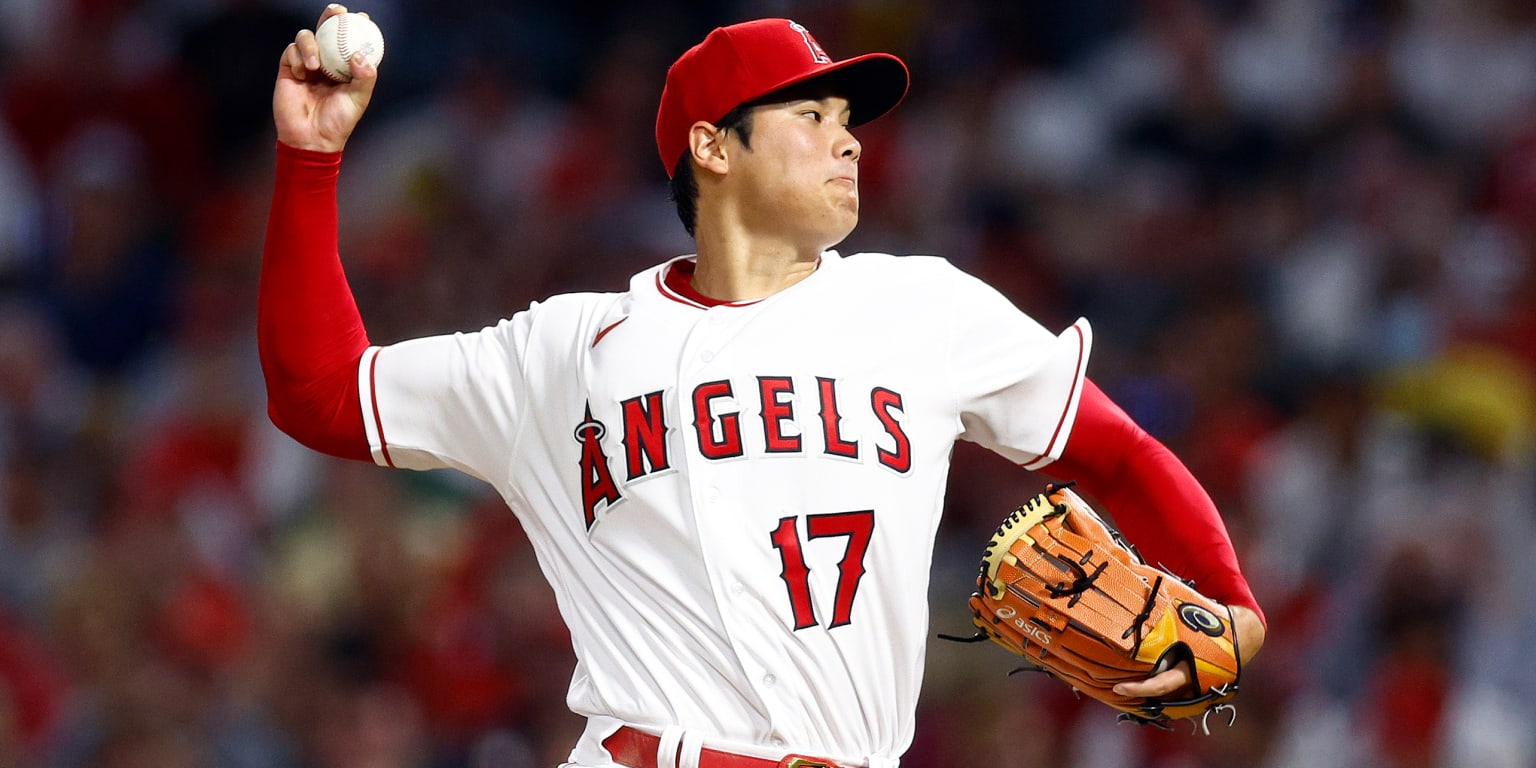It might seem impossible to say that within what was one of the most publicized and documented seasons of any player in recent baseball history, there was something that Shohei Ohtani did last year that you may not have noticed, a facet of his game in which It got better over the months.
But yes, there was something. We saw it down the stretch of the 2021 campaign. We saw it in his tremendous Opening Day start. We’ll see, we imagine, when it opens in Texas tonight at 8 pm ET, which will also be MLB.TV’s Free Game of the Day.
It’s that Ohtani, the pitcher, stopped giving walks. Basically, he’s not giving away tickets to anyone. As simple as that. It was something he wasn’t good at, but he fixed the problem and now it’s a strength of his game. Simple to explain, although considerably more complicated to achieve.
Sometimes, it’s as simple as presenting the stats, and luckily for us, Ohtani has made exactly 24 starts since the 2021 season began. We break them down the middle, put in a minimum of 30 innings pitched each period, and…
First 12 starts of 2021-2022
April 4, 2021 to June 30, 2021
– 14% walk rate (22nd worst among 280 pitchers)
Most recent 12 starts from 2021-2022
July 6, 2021 to April 7, 2022
– 3% walk rate (6th best out of 304 pitchers)
This is not a typing error. In those first 12 starts, he walked 35 in 60 innings. In the most recent 12, he has walked 10 in 75 episodes. Or to put it another way: Last year, he had two games (April 20 vs. Texas and May 5 vs. Tampa Bay) in which he ground out six guys in one game. He has made a total of 10 transfers in his last 12 appearances.
What’s happened here is that Ohtani went from one of the worst pitchers at avoiding walks to one of the best. Along the same lines, his opponents’ on-base percentage went from .322 to just .254.
For those who learn more with images, the improvement looked like this:
Needless to say, there are a lot of benefits here, beyond just “don’t walk.” On the one hand, it just means more Ohtani, because he allows her to go further in matches. In those first 12 starts, through June, he averaged five innings per opening, 60 innings over a dozen shows. In the next 12? He raised that average to 6.2 innings per game.
But why? What changed? For one thing, control is generally considered the last thing a pitcher regains after Tommy John surgery, and Ohtani pitched just 1.1 innings in 2020 after undergoing the procedure before the 2019 season.
You’d think he started throwing more pitches in the zone. More strikes, fewer balls, fewer walks. Easy, right? Not quite. If he threw more pitches in the zone, it wasn’t something that could be seen by eye.
The first 12 startsFour. Five% of shipments in the area
Next 12 starts46% of shipments in the area
Instead, he simply took the pitches hitters couldn’t help but throw at — the slicer and the slider — and started throwing them more often and earlier in the count. Look what happened to the first pitch.
While that chart shows 2021, the trend has continued into 2022. In his first start of the season, he started more curveball at-bats than any other start in his career except one.
Now let’s see what happened, against all of his pitches.
The first 12 starts
swing rate 44%
25% ball swing rate
The next 12 starts
swing rate 51%
34% swing to ball rate
That’s the most important thing here. He may have started putting the ball where he wanted more often as he got further away from Tommy John surgery. But more than anything, he started throwing different pitches at different counts, enticing hitters to swing early in the count.
It should also be noted that this has led to fewer strikeouts. It’s not that striking out 28% of the batters you’ve faced — as Ohtani has done in these last 12 starts — is a bad number. Not at all. But it is not at the level of 32% that he had in the first dozen.
Sure, it’s a trade anyone would be willing to make. The Ohtani we’re seeing now is an elite version of something new for him, not walking. (Even the walk he gave on Opening Day was in a matchup in which he went ahead 0-2 and looked confident that he had thrown the third strike on the next pitch.)
This has made Ohtani more than that phenomenon capable of being an above-average shooter and a star with the wood at the same time. Since July 1 of last year, a single starter has been more effective at keeping opponents from getting on base. His name is Max Scherzer, a surefire Hall of Famer. It was hard to think that Ohtani would be able to find a way to improve. Without making much noise, he has achieved it. No one gets to first for free, not against Ohtani. That’s over.
We would like to say thanks to the author of this write-up for this outstanding content
Shohei Ohtani has improved in this aspect

